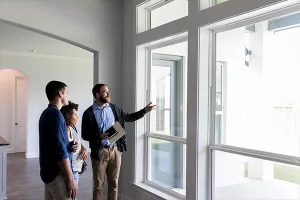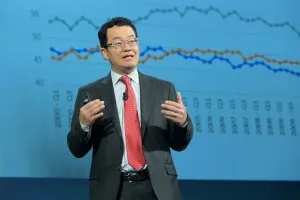Could your community benefit from having a vacant or overgrown space transformed into a vibrant, green space for everyone to gather and enjoy? A Community garden may be just the answer.
Community gardens have the potential to beautify vacant lots, augment local food supplies by increasing the availability of fresh, healthy produce in city neighborhoods and provide space for healthy recreation and community connections between citizens. They are a form of placemaking at its best: quick, easy, inexpensive with big benefits.

Additional benefits of community gardens include increasing a sense of community ownership and pride, enhancing a public space, teaching young people where food comes from, and bringing together multiple generations.

As an example, a neighborhood in Chicago’s North Lawndale neighborhood decided to do something about an empty lot which was strewn with broken bottles and overrun with grass and weeds, and had become a haven for loiterers and drug dealers. Several residents decided that transforming the space into a community garden and meeting space would be the most beautiful, useful, and cost-efficient way to turn the lot around. And they were successful, as loiterers, who had typically occupied the lot, are now nowhere to be found. The garden also helped to beautify the block and serves as an educational space for local children.

Community gardens represent a blank slate for your creativity. A community garden can include community art pieces, allotment garden beds, worm sheds, native plants, therapeutic elements, benches, paths, fountains, paving slabs and other types of edging. Just use your imagination to make your community garden a hidden gem in your community.
Gardens can also be activated with events and activities. Gardens should be multi-purpose community hubs for a range of activities including education and training, playgroups, arts and creative activities, preparing and sharing food, community events and celebrations, and social gatherings.
Community gardens are great projects in which to involve all neighborhood residents and organizations. There are roles for everyone. Residents, students and volunteers can help clear the space of litter, build beds, plan activities, paint colorful signs, install planters, plant the seeds and maintain the garden.
The American Community Garden Association has developed guidelines for launching a successful community garden in your neighborhood. These include:
- Organize a Meeting of Interested People: the rule of thumb is there needs to be at least five people invested.
- Form a Planning Committee: develop a partnership with an organization which may provide technical assistant and resources.
- Identify All Your Resources
- Approach A Sponsor
- Choose A Site: ideal site should have good sun and water; is in close proximity to community residents; and is walkable making it easier to maintain.
- Create an Agreement with property owner: details are outlined in “How to Create a Community Garden”
- Prepare And Develop The Site
- Organize the Garden
- Plan for Children
- Determine Rules and Put Them In Writing
- Help Members Keep In Touch with Each Other
Funds will be needed for supplies such as fencing, seeds, benches, and lumber to construct raised beds. Some of this funding could be from in-kind donations and the rest raised via a fundraising project. And…NAR’s Placemaking Micro-grant can help with this.
The Terra Haute (IN) Association of REALTORS® purchased a vacant lot and razed a dilapidated house which sat on the property. They applied for NAR’s Placemaking Micro-grant to help turn the space into a community garden. The lot has been cleared and plans are underway for spring plantings.

The Missoula Board of REALTORS® will not only be helping to convert a vacant lot into a community garden but will also help to supplement the local food supply by including plots to raise vegetables and to offer a place to gather for potlucks and community events.

And in the Town of Richmond, Maine, the Merrymeeting Board of REALTORS® decided to take a creative approach and enhance a newly built community library by creating an outdoor reading room and community garden. To date they have installed a stepping-stone pathway, a patio, perennials, shrubs and a bench and have used the garden for reading, children's story hour, and other activities. Come this spring, they will be planting a perennial garden with flowers donated by several residents.

So what vacant or underutilized space in your community can be turned into a beautiful community garden for the community to sit, relax, grow produce, have a cup of coffee, eat lunch, meet neighbors and smell the petunias?









